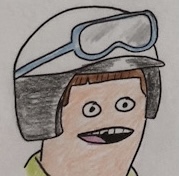|
ROFLBOT posted:If you had to engineer 4WS on a car, how would you do it? This might sound crazy, but this doesnít actually seem that complicated to me. Looking at this schematic, the primary control for the rear steer comes from the electric motor driven by the computer. This moves one end of the floating link (with the rotary mechanism) that controls the position of the distributing valve. The rear rack then displaces in the direction necessary until the other end of the floating link matches the position of the computer control end, neutralizing the distributing valve in the valve body, thereby neutralizing the steering input to the rear steer and holding the rear wheels at a constant steering angle. The feedback cable from the front rack to the rear appears to move the sleeve for the distributing valve on a cam curve based on the position of the front rack. There isnít quite enough detail in the schematic to see the exact function of the cam curve, but it likely increases or decreases the amount of rear-steer based on how far youíve got the wheel turned. This is accomplished by moving the sleeve which effectively offsets the neutral position of the distributing valve in either direction as determined by the cam curve. The hydraulic lines are a red herring as that is just the supply for the high pressure oil and return for the drain side of the system. The flow divider merely provides adequate flow to both ends of the car. There also appear to be collapsible portions of each feedback linkage to prevent damage in the event one bottoms out before another, which is good basic design. It also appears to allow for the computer to be able to control the rear steer either in or out of phase with the front - i.e. in the same direction as the front to allow crabbing for high speed stability or opposite to sharpen up steering response in twisty corners. Overall this seems to be a relatively robust system that at the very least will fail-safe and give you a car that you can still drive to the repair shop (ROFLBOTís driveway). (One of my areas Iím digging more and more into at work is mechanical governors for synchronous generators in hydroelectric plants. The concepts are similar to this system.)
|
|
|
|

|
| # ¿ May 10, 2024 09:54 |







